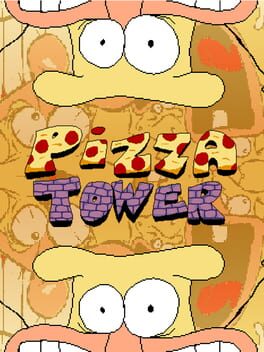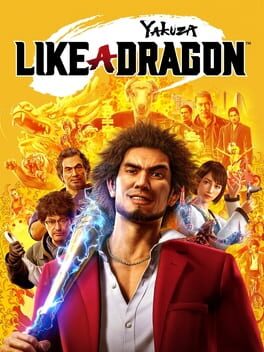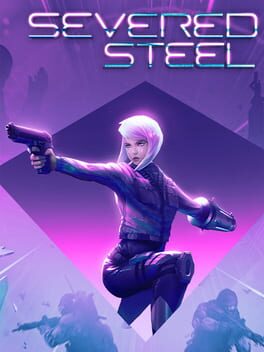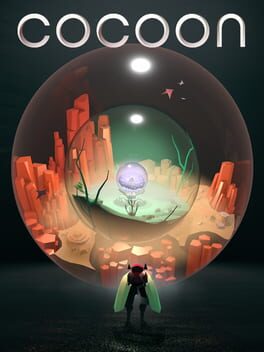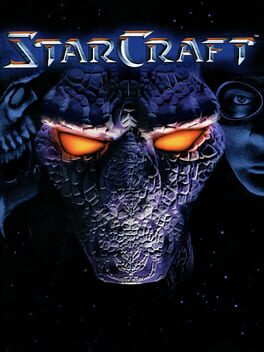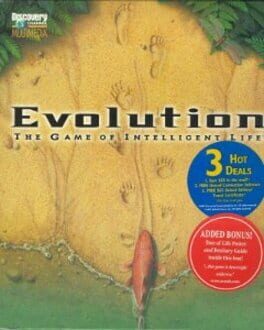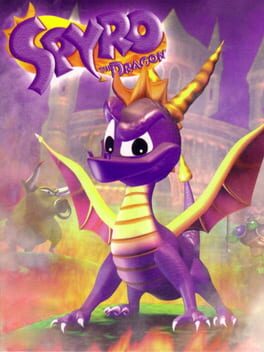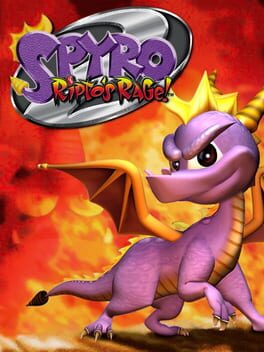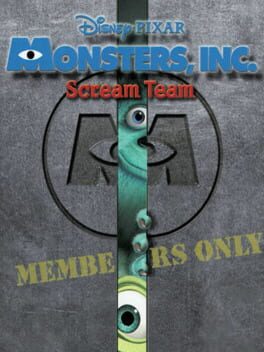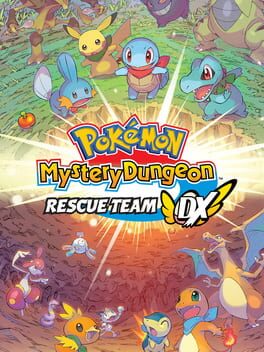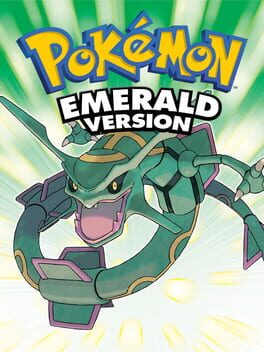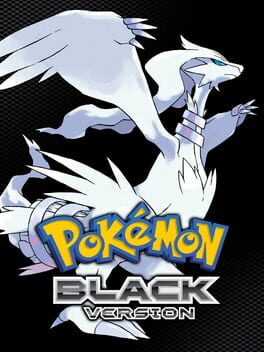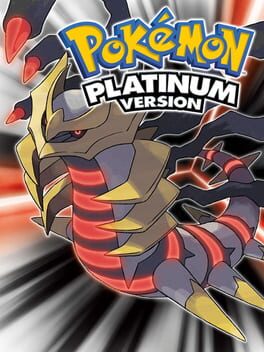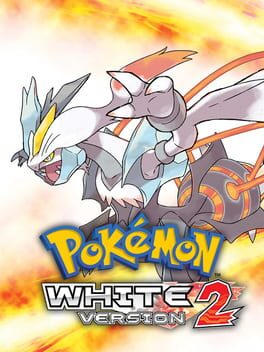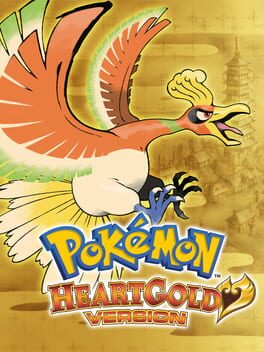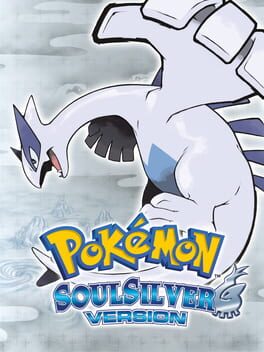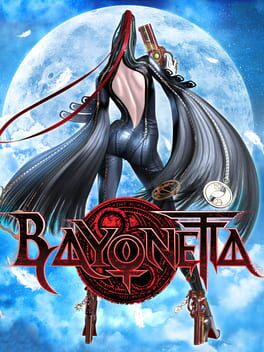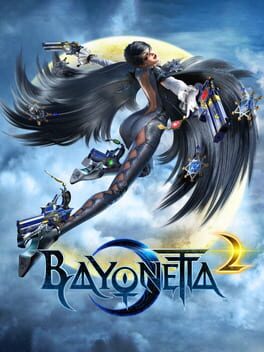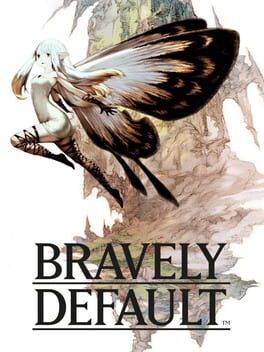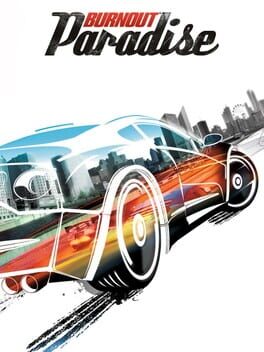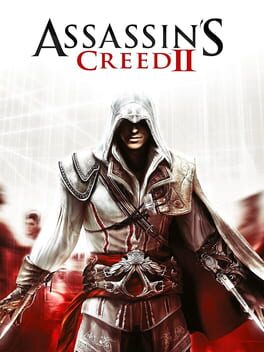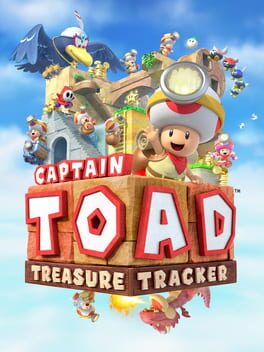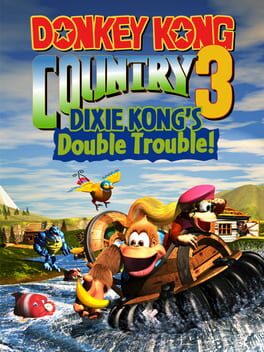Bartholomue
404 reviews liked by Bartholomue
Pizza Tower was my favorite game of 2023. An extremely fun platformer that brilliantly combined the speed of Sonic the Hedgehog with transformations that constantly turned the gameplay on its head. I saw so little room for improvement that I assumed the developers would immediately move on to a new project.
Enter the Noise Update. The premise is identical to the Plague of Shadows expansion in Shovel Knight. You play as one of the game’s villains going through the same levels, but with a completely different moveset to provide a fresh experience. I did like this a lot more than Plague of Shadows, however, and that’s because the levels feel like they actually accomodate the moveset despite minimal changes from the base game, if at all. Rather than trying to completely change the controls, Tour de Pizza made subtle changes that often made these levels MORE fun.
The first of these changes is the wall bounce. When you grabbed a wall as Peppino, he would stick to it and start running upwards. He could jump off the wall, but his speed was reduced while in the air. With The Noise, it’s the opposite. He will bounce upwards when hitting a wall and can keep grabbing it to get some extra height, but doing so gradually slows him down. Therefore, it’s good to use his powerful slam and uppercut abilities just before losing all of his speed to maximize height. Mostly though, the bounce will be used for a quick turnaround to grab another wall or landing on a slightly-out-of-reach platform while preserving air momentum. The new tornado spin made downward movement much more fun than the standard ground-pound since you can also move horizontally to wipe out defenseless enemies and preserve even more speed. The super jump was also tweaked so that it can be activated from a standstill. All of these changes result in a loose control scheme that allows The Noise to hold onto his speed in more situations than the already-agile Peppino ever could.
That alone deserves tremendous praise, but Tour de Pizza also found time to remix most of the transformations, adding a neat spin to their respective levels. Some of them had me in hysterics like the Noise eating a rocket to fly, rolling up steep walls without stopping while in a barrel, and devouring a pepper pizza at the start of RRF to make the level easier. He should be in prison for his animal abuse though. Poor Mort. :(
If Peppino was learning how to control a car, then the Noise is learning how to control a skateboard. I suck at skateboarding. Getting most of the P-ranks with Peppino was hard enough, but you have to be a legend to P-rank everything with the Noise! I will not be doing that in the forseeable future due to a few levels that I disliked regardless of character choice, but what I will do is retroactively raise my score of Pizza Tower. The level secrets do not bother me anymore, and I can confidently say this is a GOAT platformer for me.
I have no idea if Tour de Pizza plans to add more content, but if so, I would love them to take the Shovel Knight approach and create new levels based around a different character. Yes, I am seriously suggesting Pizza Tower could be the next Shovel Knight. That’s for the devs to decide, however. If they are content to stop here, I will respect that. They have created a platforming masterpiece.
Enter the Noise Update. The premise is identical to the Plague of Shadows expansion in Shovel Knight. You play as one of the game’s villains going through the same levels, but with a completely different moveset to provide a fresh experience. I did like this a lot more than Plague of Shadows, however, and that’s because the levels feel like they actually accomodate the moveset despite minimal changes from the base game, if at all. Rather than trying to completely change the controls, Tour de Pizza made subtle changes that often made these levels MORE fun.
The first of these changes is the wall bounce. When you grabbed a wall as Peppino, he would stick to it and start running upwards. He could jump off the wall, but his speed was reduced while in the air. With The Noise, it’s the opposite. He will bounce upwards when hitting a wall and can keep grabbing it to get some extra height, but doing so gradually slows him down. Therefore, it’s good to use his powerful slam and uppercut abilities just before losing all of his speed to maximize height. Mostly though, the bounce will be used for a quick turnaround to grab another wall or landing on a slightly-out-of-reach platform while preserving air momentum. The new tornado spin made downward movement much more fun than the standard ground-pound since you can also move horizontally to wipe out defenseless enemies and preserve even more speed. The super jump was also tweaked so that it can be activated from a standstill. All of these changes result in a loose control scheme that allows The Noise to hold onto his speed in more situations than the already-agile Peppino ever could.
That alone deserves tremendous praise, but Tour de Pizza also found time to remix most of the transformations, adding a neat spin to their respective levels. Some of them had me in hysterics like the Noise eating a rocket to fly, rolling up steep walls without stopping while in a barrel, and devouring a pepper pizza at the start of RRF to make the level easier. He should be in prison for his animal abuse though. Poor Mort. :(
If Peppino was learning how to control a car, then the Noise is learning how to control a skateboard. I suck at skateboarding. Getting most of the P-ranks with Peppino was hard enough, but you have to be a legend to P-rank everything with the Noise! I will not be doing that in the forseeable future due to a few levels that I disliked regardless of character choice, but what I will do is retroactively raise my score of Pizza Tower. The level secrets do not bother me anymore, and I can confidently say this is a GOAT platformer for me.
I have no idea if Tour de Pizza plans to add more content, but if so, I would love them to take the Shovel Knight approach and create new levels based around a different character. Yes, I am seriously suggesting Pizza Tower could be the next Shovel Knight. That’s for the devs to decide, however. If they are content to stop here, I will respect that. They have created a platforming masterpiece.
Finished in 2024
A turning point in the series in both gameplay and cast, but i’m pleasantly surprised by how easy it was for me to get on board with the changes. Ichiban Kasuga is an amazingly fun, kindhearted and spirited loser protagonist who instantly won me over. I’ve got 73 hours into this game and i’ve grown really really attached to Ichiban and his band of misfits.
I was worried I wouldn’t enjoy the turn based combat as much, but I did enjoy the strategy aspect and the cooky skills and jobs. It keeps things fresh and the game is not as “grind-y” as other Yakuza installments (looking at you Ishin….)
Great game for veteran and new players!!
A turning point in the series in both gameplay and cast, but i’m pleasantly surprised by how easy it was for me to get on board with the changes. Ichiban Kasuga is an amazingly fun, kindhearted and spirited loser protagonist who instantly won me over. I’ve got 73 hours into this game and i’ve grown really really attached to Ichiban and his band of misfits.
I was worried I wouldn’t enjoy the turn based combat as much, but I did enjoy the strategy aspect and the cooky skills and jobs. It keeps things fresh and the game is not as “grind-y” as other Yakuza installments (looking at you Ishin….)
Great game for veteran and new players!!
Baldur's Gate 3
2020
Started this way back in August but it took me forever to finally finish it clearly. Over 100 hours poured in puts it among the longest games I’ve played, though I guess I’m kinda glad I went so slowly given Larian would add another new patch whenever I decided to turn it back on
It’s been a while since I’ve played through the Divinity games, but given how great Original Sin 2 was I’m not surprised that this is as highly acclaimed as it is also. BG3’s a very impressive RPG in design and presentation, managing to maintain the level of depth traditional to this style of top-down CRPGs, but with immense AAA production values to match which for the genre sets it apart from everything else in that regard. I’ll admit I’m not really familiar with tabletop D&D and its rules (nor have I played the first two Baldur’s Gate games yet), but as a standalone experience I wasn’t lost and it’s amazing what they pulled off here. The closest I guess I can compare it to is like a more ambitious Dragon Age: Origins, which is awesome
There is just so much here, you’ll probably spend dozens of hours in the first act and its opening areas alone cause of how dense with content it is. Basically all of it (while being mostly optional) is worth doing which made it very easy to sink a lot of time into, and given the game’s many different quest variations and choices you’d likely get a lot of replayability out of it too. Graphically it looks fantastic, but what Larian really shows off is how dialogue is done with unique cutscenes instead of text boxes, using full mocap for literally every single NPC you can talk to. Given how BG3 is no less massive in scale, that’s a pretty remarkable advancement from their previous games
The main story itself is good, and the stakes with trying to remove the tadpoles in your head keeps it compelling. But I will say narratively I think it peaks with Act 2, as Act 3 gets a bit less focused to me and wasn’t really a fan of how rushed parts of the ending felt. I did like the epilogue and how it wraps everything up but as far as I know, that part wasn’t even in the game at launch and had to be added with a patch
The characters and their performances are largely top notch though. Some of your companions are more fleshed out than others (Shadowheart and Astarion were my favorites), but for the most part they’re all memorable and their personal quests do a good job developing them throughout. Personalization for your main character is strong too, though will probably depend on whether you choose a custom background or an origin. I made the perhaps ill advised decision to do my first playthrough as “The Dark Urge” which is considered an evil path, but I found it really interesting to roleplay as someone trying to be good despite that. It adds a very cool amount of connection to your character and the story, and really liked how varied your dialogue options are so you can still shape how you respond to your own actions and past. It seemed to affect quite a lot especially in Act 3 too so can’t say how much is changed without it, but would recommend for sure. Whenever I decide to replay I’ll try going full evil next though >:)
Combat is of course turn based with the standard fantasy classes you’d expect to choose from, and since this is D&D based all actions and skill checks are done with dice rolls. The RNG tied to this can be annoying (will not deny I have a long list of quicksaves), but I enjoyed its usage in gameplay and decision making. Will say combat can get really slow at times though, why they never have a way to speed up turns in these games is beyond me, you’ll frequently fight numerous enemies at once and having to sit through every single move they make gets a bit tedious at times. I also felt like a lot of the loot/equipment you find was a bit unrewarding, I ended up using armor and weapons I found in Act 1 for most of the entire game cause I didn’t really have much reason to switch them out. But that may just be a D&D thing with progression, especially since the level cap is 12
Besides that the only notable problem for me was performance, which could be better… It’s definitely been improved with all the patches, but at release you could tell it still needed much more polish and even now it’s not exactly stable. I’ve actually played this both on PC (Steam Deck) and PS5, though both weren’t ideal for different reasons. On Steam Deck it ran fine for most of Act 1 and Act 2 at 30FPS, and with FSR 2.2 (this wasn’t added til later tbf) it looks pretty great now also. Act 3 really starts to push it though, it’s the most impressive part of the game on a technical level given how packed the area is with so many NPCs, but clearly the least optimized as I had near constant FPS drops and more noticeable bugs like frequent animation lags or quests being easier to sequence break. That said, those with much better hardware for PC probably won’t have as much of an issue
PS5 in comparison runs as it should, even Act 3 mostly holds 60 FPS in performance mode from what I’ve played which is great. This would be the obvious way to play BG3, if not for the insane amount of crashes I’ve had on it that crippled the port for me. I haven’t played something that crashed this often since Cyberpunk at launch, past a point I couldn’t even open my saves anymore without getting kicked off and some of them even started saying they were corrupted somehow, rendering it basically unplayable on there (thankfully there’s cross save support). This is still not fixed in my case and not sure if it’s just my PS5 or something to do with the game on console, but regardless wouldn’t advise buying it on there. Some don’t seem to have as much of a struggle with it though so YMMV on that I suppose
Despite the gripes (and extreme annoyance at the PS5 version), I really enjoyed BG3 and was sad to see it end after all the time I spent on it. More than anything though I’m glad it’s such a massive success for Larian, despite their positives isometric CRPGs are usually seen as having niche appeal so it’s cool to finally have one break out into mainstream like this has. Hopefully bodes well for the genre going forward
It’s been a while since I’ve played through the Divinity games, but given how great Original Sin 2 was I’m not surprised that this is as highly acclaimed as it is also. BG3’s a very impressive RPG in design and presentation, managing to maintain the level of depth traditional to this style of top-down CRPGs, but with immense AAA production values to match which for the genre sets it apart from everything else in that regard. I’ll admit I’m not really familiar with tabletop D&D and its rules (nor have I played the first two Baldur’s Gate games yet), but as a standalone experience I wasn’t lost and it’s amazing what they pulled off here. The closest I guess I can compare it to is like a more ambitious Dragon Age: Origins, which is awesome
There is just so much here, you’ll probably spend dozens of hours in the first act and its opening areas alone cause of how dense with content it is. Basically all of it (while being mostly optional) is worth doing which made it very easy to sink a lot of time into, and given the game’s many different quest variations and choices you’d likely get a lot of replayability out of it too. Graphically it looks fantastic, but what Larian really shows off is how dialogue is done with unique cutscenes instead of text boxes, using full mocap for literally every single NPC you can talk to. Given how BG3 is no less massive in scale, that’s a pretty remarkable advancement from their previous games
The main story itself is good, and the stakes with trying to remove the tadpoles in your head keeps it compelling. But I will say narratively I think it peaks with Act 2, as Act 3 gets a bit less focused to me and wasn’t really a fan of how rushed parts of the ending felt. I did like the epilogue and how it wraps everything up but as far as I know, that part wasn’t even in the game at launch and had to be added with a patch
The characters and their performances are largely top notch though. Some of your companions are more fleshed out than others (Shadowheart and Astarion were my favorites), but for the most part they’re all memorable and their personal quests do a good job developing them throughout. Personalization for your main character is strong too, though will probably depend on whether you choose a custom background or an origin. I made the perhaps ill advised decision to do my first playthrough as “The Dark Urge” which is considered an evil path, but I found it really interesting to roleplay as someone trying to be good despite that. It adds a very cool amount of connection to your character and the story, and really liked how varied your dialogue options are so you can still shape how you respond to your own actions and past. It seemed to affect quite a lot especially in Act 3 too so can’t say how much is changed without it, but would recommend for sure. Whenever I decide to replay I’ll try going full evil next though >:)
Combat is of course turn based with the standard fantasy classes you’d expect to choose from, and since this is D&D based all actions and skill checks are done with dice rolls. The RNG tied to this can be annoying (will not deny I have a long list of quicksaves), but I enjoyed its usage in gameplay and decision making. Will say combat can get really slow at times though, why they never have a way to speed up turns in these games is beyond me, you’ll frequently fight numerous enemies at once and having to sit through every single move they make gets a bit tedious at times. I also felt like a lot of the loot/equipment you find was a bit unrewarding, I ended up using armor and weapons I found in Act 1 for most of the entire game cause I didn’t really have much reason to switch them out. But that may just be a D&D thing with progression, especially since the level cap is 12
Besides that the only notable problem for me was performance, which could be better… It’s definitely been improved with all the patches, but at release you could tell it still needed much more polish and even now it’s not exactly stable. I’ve actually played this both on PC (Steam Deck) and PS5, though both weren’t ideal for different reasons. On Steam Deck it ran fine for most of Act 1 and Act 2 at 30FPS, and with FSR 2.2 (this wasn’t added til later tbf) it looks pretty great now also. Act 3 really starts to push it though, it’s the most impressive part of the game on a technical level given how packed the area is with so many NPCs, but clearly the least optimized as I had near constant FPS drops and more noticeable bugs like frequent animation lags or quests being easier to sequence break. That said, those with much better hardware for PC probably won’t have as much of an issue
PS5 in comparison runs as it should, even Act 3 mostly holds 60 FPS in performance mode from what I’ve played which is great. This would be the obvious way to play BG3, if not for the insane amount of crashes I’ve had on it that crippled the port for me. I haven’t played something that crashed this often since Cyberpunk at launch, past a point I couldn’t even open my saves anymore without getting kicked off and some of them even started saying they were corrupted somehow, rendering it basically unplayable on there (thankfully there’s cross save support). This is still not fixed in my case and not sure if it’s just my PS5 or something to do with the game on console, but regardless wouldn’t advise buying it on there. Some don’t seem to have as much of a struggle with it though so YMMV on that I suppose
Despite the gripes (and extreme annoyance at the PS5 version), I really enjoyed BG3 and was sad to see it end after all the time I spent on it. More than anything though I’m glad it’s such a massive success for Larian, despite their positives isometric CRPGs are usually seen as having niche appeal so it’s cool to finally have one break out into mainstream like this has. Hopefully bodes well for the genre going forward
Baldur's Gate 3
2020
A fun side effect of writing about games, even on an amateur level, is that one ends up reflecting and researching on games a bit deeper and thus getting to know more about them than if they just hop from game to game. I originally planned to open this review by talking about the early days of the DS and PSP, how despite the DS being the best selling (and arguably best) portable in history, the two portables being presented in 2004 left audiences puzzled as to what Nintendo was thinking, and why anyone would want that quirky thing instead of the much slicker PSP. That's because I believed that to be the cause for Konami opting to play it safe and make the first DS Castlevania a sequel -- an assumption which proved incorrect.
No, Iga was pretty much sold on the DS from the start, and Aria of Sorrow's great sales on a Nintendo platform sealed the deal on the DS as the host for the next portable entry in the Castlevania series. As for why make a direct sequel, in particular, that is owed to Iga knowing that he and his team had accomplished something special with Aria, both in terms of storyline and gameplay. Iga truly loves the soul system from that game, and that would become even more evident years later, with Bloodstained: Ritual of the Night, but I digress.
As a direct sequel to Aria, Dawn of Sorrow might get criticised for being a rethreading of known ground, but the fact of the matter is, it's rethreading some damn solid ground. Most of what I mention in my Aria of Sorrow review applies to its sequel as well, from the robust gameplay systems to the beautiful sprite art. There are some areas in which Dawn attempts to stand out from its prequel, some of which are successful, some of which, not so much.
Immediately apparent from the cover of the game is that the art style for character art was changed, moving away from Ayami Kojima's (gorgeous) character portraits to... somewhat generic anime art. This change is said to be a result of demographics, with portable gamers being mainly children and, as such, it making sense to use character art that appealed more to that age group. Unfortunately, none of us happened to be in the room when that decision was taken to loudly point out that Aria was a success among that very demographic and that aging down the brand identity so suddenly might be a bad idea, so this is what we got stuck with.
It's not that the character art is terrible -- it reminds me of Rondo, which also used anime art and is still widely beloved by the fanbase -- but Dawn is trying to tell a story from a handicapped position and nailing the gothic horror vibes right from the cover would have helped its case by a lot. See, the position of a sequel to a work that was never written in a way to have one is a difficult one: the big twists have already happened and characters have experienced their respective growths, so what do we work with to make a new story?
(Incidentally, Dawn opens by spoiling the big twist in Aria, so absolutely play Aria first if you can.)
What immediately springs to mind are those Disney direct-to-VHS sequels that were mostly pretty forgettable, when not antithetical to the original work, as that's absolutely the vibe one gets when one mischievous gang of troublemakers shows up in the opening in Dawn to oppose Soma and his crew. The generic cartoon aesthetic makes for a poor first impression even though the storyline is actually quite competent and, for a game ostensibly marketed at children, it shows some rather dark imagery.
The idea is that, with Dracula being forever gone, a cult forms from people that desire a new Dark Lord, and a few of its head figures step forward as candidates to fill the power vacuula. They decide to have a go at Soma, attacking him and his girlfriend when the two are hanging out in town, and our boy doesn't take too kindly to that, setting out in pursuit of the group, pulling the whole crew from Aria in with him. What follows is a metroidvania romp just like Aria, which has Soma claiming monsters' souls as he brings down the Dark Lord wannabes.
Where Dawn successfully improves on Aria is in quality of life features as well as better tuning. On the former front, Soma can now use two different equipment sets that can be swapped at the press of the X button, a very welcome feature as it switching souls without entering the menu, thus letting the player adapt to each situation faster. The game also makes good use of the DS's top screen, displaying either the castle map or a screen with Soma's and enemy's stats. While having the map always visible is a godsend in this genre, having enemy info readily available is great when farming souls, as it does exactly the same thing the gadget from the Advance Collection does in Aria.
As for tuning, weapons have been rebalanced, emphasizing their variety. There's even a system through which, by imbuing weapons with certain souls, they can be upgraded, a nice addition that unfortunately ends up underutilized due to the rarity of some of the souls it requires. Having a use for excess souls, however, is a nice thought, and again I point to Bloodstained as the unofficial successor to Dawn, with Iga further refining this idea in that game.
Incidentally, while Aria already had souls that powered up with their count, Dawn brings this feature to the forefront explicitly calling it the Soul Level -- this is also a key feature in Bloodstained, where it exists for all souls-- uh, all shards. Souls have also been retooled in Dawn: while a lot of them are reskins from those from Aria, there are a handful of interesting new additions to the roster, and the player can expect to work with different toolsets than the ones the prequel gives. Of note is that late game souls are absolutely stacked, making them really gratifying to use.
And they have to be, because the best part of Dawn is its extremely challenging bosses. Aria's were great, but Dawn takes it to a new level: every boss is a unique enemy with a carefully crafted moveset, and their hits are extremely punishing. Even when spamming items, playing sloppily ultimately ends up in Soma getting overwhelmed, so instead, the player is expected to learn each tell and carefully avoid each attack. The magic seal mechanic is the cherry on top, forcing the player to remain vigilant for the prompt while adding flavor to finishing off the boss.
(Admittedly, if playing on an emulator, magic seals are an absolutely cursed mechanic, practically serving as an accidental form of anti-piracy . In that case, use the mod that removes them from the game.)
But is it better than Aria? Probably not: it will never be able to count on the simplicity and novelty factor that that game presented. However, even if it doesn't surpass its predecessor, it is a thoroughly enjoyable game that proudly stands at its prequel's side. Fans of Aria willing to look past a horrid first impression will find themselves a fiercely challenging game that brings back many of the original's boons.
No, Iga was pretty much sold on the DS from the start, and Aria of Sorrow's great sales on a Nintendo platform sealed the deal on the DS as the host for the next portable entry in the Castlevania series. As for why make a direct sequel, in particular, that is owed to Iga knowing that he and his team had accomplished something special with Aria, both in terms of storyline and gameplay. Iga truly loves the soul system from that game, and that would become even more evident years later, with Bloodstained: Ritual of the Night, but I digress.
As a direct sequel to Aria, Dawn of Sorrow might get criticised for being a rethreading of known ground, but the fact of the matter is, it's rethreading some damn solid ground. Most of what I mention in my Aria of Sorrow review applies to its sequel as well, from the robust gameplay systems to the beautiful sprite art. There are some areas in which Dawn attempts to stand out from its prequel, some of which are successful, some of which, not so much.
Immediately apparent from the cover of the game is that the art style for character art was changed, moving away from Ayami Kojima's (gorgeous) character portraits to... somewhat generic anime art. This change is said to be a result of demographics, with portable gamers being mainly children and, as such, it making sense to use character art that appealed more to that age group. Unfortunately, none of us happened to be in the room when that decision was taken to loudly point out that Aria was a success among that very demographic and that aging down the brand identity so suddenly might be a bad idea, so this is what we got stuck with.
It's not that the character art is terrible -- it reminds me of Rondo, which also used anime art and is still widely beloved by the fanbase -- but Dawn is trying to tell a story from a handicapped position and nailing the gothic horror vibes right from the cover would have helped its case by a lot. See, the position of a sequel to a work that was never written in a way to have one is a difficult one: the big twists have already happened and characters have experienced their respective growths, so what do we work with to make a new story?
(Incidentally, Dawn opens by spoiling the big twist in Aria, so absolutely play Aria first if you can.)
What immediately springs to mind are those Disney direct-to-VHS sequels that were mostly pretty forgettable, when not antithetical to the original work, as that's absolutely the vibe one gets when one mischievous gang of troublemakers shows up in the opening in Dawn to oppose Soma and his crew. The generic cartoon aesthetic makes for a poor first impression even though the storyline is actually quite competent and, for a game ostensibly marketed at children, it shows some rather dark imagery.
The idea is that, with Dracula being forever gone, a cult forms from people that desire a new Dark Lord, and a few of its head figures step forward as candidates to fill the power vacuula. They decide to have a go at Soma, attacking him and his girlfriend when the two are hanging out in town, and our boy doesn't take too kindly to that, setting out in pursuit of the group, pulling the whole crew from Aria in with him. What follows is a metroidvania romp just like Aria, which has Soma claiming monsters' souls as he brings down the Dark Lord wannabes.
Where Dawn successfully improves on Aria is in quality of life features as well as better tuning. On the former front, Soma can now use two different equipment sets that can be swapped at the press of the X button, a very welcome feature as it switching souls without entering the menu, thus letting the player adapt to each situation faster. The game also makes good use of the DS's top screen, displaying either the castle map or a screen with Soma's and enemy's stats. While having the map always visible is a godsend in this genre, having enemy info readily available is great when farming souls, as it does exactly the same thing the gadget from the Advance Collection does in Aria.
As for tuning, weapons have been rebalanced, emphasizing their variety. There's even a system through which, by imbuing weapons with certain souls, they can be upgraded, a nice addition that unfortunately ends up underutilized due to the rarity of some of the souls it requires. Having a use for excess souls, however, is a nice thought, and again I point to Bloodstained as the unofficial successor to Dawn, with Iga further refining this idea in that game.
Incidentally, while Aria already had souls that powered up with their count, Dawn brings this feature to the forefront explicitly calling it the Soul Level -- this is also a key feature in Bloodstained, where it exists for all souls-- uh, all shards. Souls have also been retooled in Dawn: while a lot of them are reskins from those from Aria, there are a handful of interesting new additions to the roster, and the player can expect to work with different toolsets than the ones the prequel gives. Of note is that late game souls are absolutely stacked, making them really gratifying to use.
And they have to be, because the best part of Dawn is its extremely challenging bosses. Aria's were great, but Dawn takes it to a new level: every boss is a unique enemy with a carefully crafted moveset, and their hits are extremely punishing. Even when spamming items, playing sloppily ultimately ends up in Soma getting overwhelmed, so instead, the player is expected to learn each tell and carefully avoid each attack. The magic seal mechanic is the cherry on top, forcing the player to remain vigilant for the prompt while adding flavor to finishing off the boss.
(Admittedly, if playing on an emulator, magic seals are an absolutely cursed mechanic, practically serving as an accidental form of anti-piracy . In that case, use the mod that removes them from the game.)
But is it better than Aria? Probably not: it will never be able to count on the simplicity and novelty factor that that game presented. However, even if it doesn't surpass its predecessor, it is a thoroughly enjoyable game that proudly stands at its prequel's side. Fans of Aria willing to look past a horrid first impression will find themselves a fiercely challenging game that brings back many of the original's boons.
Winter Valley Hike
2023
It's a pretty average walking simulator. It has pretty looking graphics and a fitting, chill soundtrack, but that's it. There is no story, nothing exciting in the map and the environment is pretty repetitive. You have a few Hike Goals that you need to find, but they were pretty easy to find as long as you had a method to your walking around the map.
As this was winter themed and one of my favorite winter themed walking simulators is Chionophile, I wanted to compare the two a little bit. Both have nothing special in them, no story or anything, but somehow Chionophile makes the atmosphere more realistic and enjoyable. I feel like if Winter Valley Hike would have had the crunch of the snow under the character's feet, or the occasional animal here and there, it would have had a better score from me.
That being said, it's not really worth it to buy, unless you get it for free, then by all means play it. It's quite short.
As this was winter themed and one of my favorite winter themed walking simulators is Chionophile, I wanted to compare the two a little bit. Both have nothing special in them, no story or anything, but somehow Chionophile makes the atmosphere more realistic and enjoyable. I feel like if Winter Valley Hike would have had the crunch of the snow under the character's feet, or the occasional animal here and there, it would have had a better score from me.
That being said, it's not really worth it to buy, unless you get it for free, then by all means play it. It's quite short.
Severed Steel
2021
There's not a ton of complexity as to how Severed Steel operates and some elements need fine-tuning, but I can't help but appreciate how much the game accomplishes with surprisingly little. I'm a fan of the simple and effective UI; your aiming reticle is surrounded by two bars that convey how much ammo and slo-mo time is left (so these gauges are always near the center of attention) and the flashing light on your gun also changes color (from light neon colors to yellow to red) so you're constantly keyed in on when you'll need to pick up a gun early or engage/disengage when running low on supplies. Enemies stand out from the environment thanks to the cel-shaded enemy outlines, and upon death emit a distinct explosion sound-effect so there's no ambiguity when quickly rifling through targets during firefights or when picking off enemies from afar. Guns feel great to aim and fire in slow-mo, mainly because there's very noticeable recoil when firing in real-time; the contrast really helps sell the necessity of the feature. I also love Severed Steel's kick as both a form of attack and traversal; the obvious purpose is your primary melee attack while holding a gun if you don't want to expend your limited magazine to finish off an enemy as well as kicking open doors, but it can also be used to quickly ascend up walls or kick off of grounded/aerial enemies if your double jump isn't enough. The same goes for the arm cannon; you can fire holes into any surface if you don't feel like hunting down stairs/doorways for objectives, but it also provides a nice desperation option to instantly eliminate shielded enemies or drop heavy grunts down to another floor if you find yourself without a weapon.
Despite the appealing core gameplay, Severed Steel can often feel a bit repetitive. Enemy variety feels lacking since the player is usually approaching enemies in a similar manner (that is, entering slo-mo while using stunts to efficiently dispatch foes while firing into their heads/backsides), and I would have liked to see enemies that had to be specifically eliminated using the arm cannon or melee as mix-ups. The Rogue Steel mode does touch upon this with random enemy buffs that force such approaches, but at times I feel like this mode prefers to lengthen combat by overwhelming the player with excess enemies with more health. I do think the game could have also leaned a bit more into its parkour elements with additional stages that focused upon traversal and dodging/quickly disposing of enemies, as there were only a couple of timed story missions that necessitated a rush to the end. Finally, I have to agree with HotPocketHPE that the slo-mo gauge is unbalanced; you'll practically never run out of bullet time as long as you're staying in stunt mode (super easy since there are floors and walls aplenty to slide and wallrun), though this is again addressed from playing Rogue Steel via the "Rebalanced Bullet-Time" unlockable modifier. Even with these gripes however, Severed Steel is a pretty easy recommendation considering how content-rich the game is from its many different modes and extra campaign/workshop levels to tinker with. It was an absolute steal at 80% off on the Steam Spring Sale, and I can't wait to see how Greylock Studio iterates and improves upon their already fantastic formula.
Despite the appealing core gameplay, Severed Steel can often feel a bit repetitive. Enemy variety feels lacking since the player is usually approaching enemies in a similar manner (that is, entering slo-mo while using stunts to efficiently dispatch foes while firing into their heads/backsides), and I would have liked to see enemies that had to be specifically eliminated using the arm cannon or melee as mix-ups. The Rogue Steel mode does touch upon this with random enemy buffs that force such approaches, but at times I feel like this mode prefers to lengthen combat by overwhelming the player with excess enemies with more health. I do think the game could have also leaned a bit more into its parkour elements with additional stages that focused upon traversal and dodging/quickly disposing of enemies, as there were only a couple of timed story missions that necessitated a rush to the end. Finally, I have to agree with HotPocketHPE that the slo-mo gauge is unbalanced; you'll practically never run out of bullet time as long as you're staying in stunt mode (super easy since there are floors and walls aplenty to slide and wallrun), though this is again addressed from playing Rogue Steel via the "Rebalanced Bullet-Time" unlockable modifier. Even with these gripes however, Severed Steel is a pretty easy recommendation considering how content-rich the game is from its many different modes and extra campaign/workshop levels to tinker with. It was an absolute steal at 80% off on the Steam Spring Sale, and I can't wait to see how Greylock Studio iterates and improves upon their already fantastic formula.
Cocoon
2023
Did not feel this at all. To me, that trippy sphere mechanic is pretty much the only out of the ordinary thing this game has to offer, other than that, the puzzling is perfectly average. It seems to me as if everyone was so blown away by the sphere stuff that it overshadowed the average gameplay otherwise for them. Or maybe I just missed the appeal.
Confession: I didn't actually buy the Advance Collection for a history trip with the Castlevania series. Instead, I just wanted an excuse to play Aria of Sorrow again, with some other games as a bonus. Aria was my first contact with the Castlevania series, something that was both a blessing and a curse, because from then on, playing other Castlevanias always gave a feeling of "this is not quite it". Of course, in revisiting an old favorite, there's always the risk of one's memory not holding up and just not remembering the game's flaws.
One thing I definitely didn't remember was that the protagonist, Soma Cruz, is actually an eighteen year-old high-schooler, to which my immediate reaction was "no he's not". Just look at his portrait, beautifully rendered by Ayami Kojima. That piercing gaze? Shining white hair? That black turtleneck with the sleek fur-lined coat? This man is the definition of too cool for school. If he's a high schooler, he probably takes love letters out of his locker on a wheelbarrow. And he ignores them all, because that's how cool he is.
Erm-ahem. Fan fiction aside, the game takes place in Japan in the year of 2035. A solar eclipse is happening on that day, and Soma is headed to Hakuba Shrine to meet his childhood friend Mina and watch the event from there. Upon arriving at the shrine, however, Soma loses consciousness, and the two are transported to a mysterious castle, where they meet the enigmatic Genya Arikado. At first, he doesn't know what to do about the two teenagers, but as the trio are jumped by monsters, something unexpected happens: Soma absorbs the essence of a monster he defeats, obtaining its power. Having witnessed this, Arikado then ushers Soma to reach the top of the castle so the group can escape from it.
Aria was the last Castlevania game made for the Game Boy Advance, and it shows. The mastery over the limited hardware and small screen is displayed in some of the most beautiful spritework on the system. Soma himself is a shining example: the fluidity of his walk cycle, the turning of his body as he puts his strength into a swing, the way his coat gently sways with the wind... the amount of detail crammed into this not even 40 pixels tall character is impressive.
One might say that putting a lot of work into the main character is standard, as that will be the focus of the player's attention most of the time. The idea with such an approach would be to put a lot of work in the main character, and then not push enemies and other characters too far. Which is fine, except that no sprite artist at Konami got that memo, because they flexed all over the place. Enemies look positively gorgeous in Aria, from the first disgustingly goopy zombie met in the Eternal Corridor all the way to Dracula's final form, all of them are carefully designed, colored, shaded and animated.
To say nothing of the environments, which are a further step up from Harmony of Dissonance and look especially smooth. Parallax and Mode 7-like effects are a given by this point, but Aria takes it further by incorporating animated tilesets for lighting effects. The save room in this game is the most beautiful in the series, with the flickering of the flame on display through the walls and the statue in the center.
And the sound design? There are a surprising amount of voice clips for a GBA game, and enemies make all sorts of noises that give them more personality -- I especially like the intense death screams. It should also be said that the game's original soundtrack is one banger after another. Konami is really bad at this memo thing, because the composer also didn't get the one that said "these are the first and second areas of the game, no need to go all out". To say nothing of the moments where it actually made sense go hard, which... Incredible stuff.
Everything in Aria feels just right, like after a couple of games of trying to iterate on Symphony of the Night, something just clicked. The castle is a perfect mix of maze and proper castle, with the areas that branch and connect unpredictably, but without losing the feeling of distinct zones, which happened in HoD to some extent. Aria even went back to having transition rooms like SotN did, which despite being technically unnecessary in a GBA game, feel extremely natural from a design standpoint, creating some breathing room between areas that emphasize the difference between them.
In addition, the game maintains a consistent level of challenge from beginning to end, with enemies and bosses that are varied and engaging. Plus, with Soma not being a vampire hunter, the player is not locked into a whip for the entirety of the game, and he instead gets access to an arsenal of swords, lances, axes and blunt weapons. The choice between them is not simply about aesthetics: each individual weapon has a different range and hitbox shape, as well as distinct swing and recovery times. It's often advantageous to swap between weapon types for specific encounters, which speaks to how well designed equipment is.
Aria's greatest asset, however, is the Soul System and its monster abilities, through which you-- yes, you -- can now be the little asshat throwing bones from higher ground, living the ultimate Castlevania power fantasy. As established in the opening segment, when defeating enemies, Soma might obtain a soul, which when equipped, enable either a passive, sustained or instant ability related in some way to that monster. Souls are both a means of progression, with key souls obtained in specific rooms allowing access to new areas of the castle, and for combat purposes, replacing the series' traditional subweapons.
At first, this might seem similar to the DSS in that abilities are obtained as random drops from monsters, but it's far superior. For one, there's a direct connection between the monster and what its dropped soul does, which gives the system more personality. Moreover, unlike cards, every monster has a soul. In the face of the low drop rate, while it's unlikely the player will obtain every soul as they travel through the castle (unless your name is TASBot), the law of averages results in them obtaining some set of souls that they can work with. The result is that every playthrough feels slightly different as the player works with a set of tools. Also, completionists have their work cut out for them, hunting exotic monsters with the aid of late game mechanics that boost drop rates.
Souls are also an important metanarrative element that lends credence to Soma's growth. Unlike Juste before him, Soma is a student with no formal combat training, and this is reflected on his initial abilities, which are restricted to jumping and a weak attack. As he explores deeper into the castle, however, he grows stronger and faster, becoming a real powerhouse by the end of the game, and souls make that growth over the course of the story, down to the completely artificial video game notion of levels, seem justified.
Incidentally, Aria of Sorrow features an outstanding central narrative. This is largely owed to its mysterious and layered characters who make frequent appearances throughout the castle, and also to the unusual circumstances surrounding Dracula's castle in the year of 2035 itself. Similarly to HoD, ol' Vlad is nowhere to be found, this time because Aria takes place in an age in which Dracula was permanently destroyed by the Belmonts, and the characters, from church officials to government agents to soldiers to our unlucky duo of teenagers, have different ideas on why the castle reappeared.
There's no feeling quite as refreshing as returning to a childhood classic and realizing it's just as outstanding as it was all those years ago. Aria of Sorrow is the result of years of iteration and passion, and stands amongst the best Castlevanias and the best metroidvanias ever made. It alone justifies buying the Advance Collection.
One thing I definitely didn't remember was that the protagonist, Soma Cruz, is actually an eighteen year-old high-schooler, to which my immediate reaction was "no he's not". Just look at his portrait, beautifully rendered by Ayami Kojima. That piercing gaze? Shining white hair? That black turtleneck with the sleek fur-lined coat? This man is the definition of too cool for school. If he's a high schooler, he probably takes love letters out of his locker on a wheelbarrow. And he ignores them all, because that's how cool he is.
Erm-ahem. Fan fiction aside, the game takes place in Japan in the year of 2035. A solar eclipse is happening on that day, and Soma is headed to Hakuba Shrine to meet his childhood friend Mina and watch the event from there. Upon arriving at the shrine, however, Soma loses consciousness, and the two are transported to a mysterious castle, where they meet the enigmatic Genya Arikado. At first, he doesn't know what to do about the two teenagers, but as the trio are jumped by monsters, something unexpected happens: Soma absorbs the essence of a monster he defeats, obtaining its power. Having witnessed this, Arikado then ushers Soma to reach the top of the castle so the group can escape from it.
Aria was the last Castlevania game made for the Game Boy Advance, and it shows. The mastery over the limited hardware and small screen is displayed in some of the most beautiful spritework on the system. Soma himself is a shining example: the fluidity of his walk cycle, the turning of his body as he puts his strength into a swing, the way his coat gently sways with the wind... the amount of detail crammed into this not even 40 pixels tall character is impressive.
One might say that putting a lot of work into the main character is standard, as that will be the focus of the player's attention most of the time. The idea with such an approach would be to put a lot of work in the main character, and then not push enemies and other characters too far. Which is fine, except that no sprite artist at Konami got that memo, because they flexed all over the place. Enemies look positively gorgeous in Aria, from the first disgustingly goopy zombie met in the Eternal Corridor all the way to Dracula's final form, all of them are carefully designed, colored, shaded and animated.
To say nothing of the environments, which are a further step up from Harmony of Dissonance and look especially smooth. Parallax and Mode 7-like effects are a given by this point, but Aria takes it further by incorporating animated tilesets for lighting effects. The save room in this game is the most beautiful in the series, with the flickering of the flame on display through the walls and the statue in the center.
And the sound design? There are a surprising amount of voice clips for a GBA game, and enemies make all sorts of noises that give them more personality -- I especially like the intense death screams. It should also be said that the game's original soundtrack is one banger after another. Konami is really bad at this memo thing, because the composer also didn't get the one that said "these are the first and second areas of the game, no need to go all out". To say nothing of the moments where it actually made sense go hard, which... Incredible stuff.
Everything in Aria feels just right, like after a couple of games of trying to iterate on Symphony of the Night, something just clicked. The castle is a perfect mix of maze and proper castle, with the areas that branch and connect unpredictably, but without losing the feeling of distinct zones, which happened in HoD to some extent. Aria even went back to having transition rooms like SotN did, which despite being technically unnecessary in a GBA game, feel extremely natural from a design standpoint, creating some breathing room between areas that emphasize the difference between them.
In addition, the game maintains a consistent level of challenge from beginning to end, with enemies and bosses that are varied and engaging. Plus, with Soma not being a vampire hunter, the player is not locked into a whip for the entirety of the game, and he instead gets access to an arsenal of swords, lances, axes and blunt weapons. The choice between them is not simply about aesthetics: each individual weapon has a different range and hitbox shape, as well as distinct swing and recovery times. It's often advantageous to swap between weapon types for specific encounters, which speaks to how well designed equipment is.
Aria's greatest asset, however, is the Soul System and its monster abilities, through which you-- yes, you -- can now be the little asshat throwing bones from higher ground, living the ultimate Castlevania power fantasy. As established in the opening segment, when defeating enemies, Soma might obtain a soul, which when equipped, enable either a passive, sustained or instant ability related in some way to that monster. Souls are both a means of progression, with key souls obtained in specific rooms allowing access to new areas of the castle, and for combat purposes, replacing the series' traditional subweapons.
At first, this might seem similar to the DSS in that abilities are obtained as random drops from monsters, but it's far superior. For one, there's a direct connection between the monster and what its dropped soul does, which gives the system more personality. Moreover, unlike cards, every monster has a soul. In the face of the low drop rate, while it's unlikely the player will obtain every soul as they travel through the castle (unless your name is TASBot), the law of averages results in them obtaining some set of souls that they can work with. The result is that every playthrough feels slightly different as the player works with a set of tools. Also, completionists have their work cut out for them, hunting exotic monsters with the aid of late game mechanics that boost drop rates.
Souls are also an important metanarrative element that lends credence to Soma's growth. Unlike Juste before him, Soma is a student with no formal combat training, and this is reflected on his initial abilities, which are restricted to jumping and a weak attack. As he explores deeper into the castle, however, he grows stronger and faster, becoming a real powerhouse by the end of the game, and souls make that growth over the course of the story, down to the completely artificial video game notion of levels, seem justified.
Incidentally, Aria of Sorrow features an outstanding central narrative. This is largely owed to its mysterious and layered characters who make frequent appearances throughout the castle, and also to the unusual circumstances surrounding Dracula's castle in the year of 2035 itself. Similarly to HoD, ol' Vlad is nowhere to be found, this time because Aria takes place in an age in which Dracula was permanently destroyed by the Belmonts, and the characters, from church officials to government agents to soldiers to our unlucky duo of teenagers, have different ideas on why the castle reappeared.
There's no feeling quite as refreshing as returning to a childhood classic and realizing it's just as outstanding as it was all those years ago. Aria of Sorrow is the result of years of iteration and passion, and stands amongst the best Castlevanias and the best metroidvanias ever made. It alone justifies buying the Advance Collection.
EarthBound
1994
Since I’ve already offered my thoughts on Mother 1 and 3, I might as well do the same with Mother 2/EarthBound. If I had to sum up my thoughts on the Mother series, it would be that each game is solid with one major flaw. Mother 1 has a great atmosphere and is the quickest to complete overall, but has a lot of grinding; Mother 3 has some nice QoL improvements, a gorgeous soundtrack, and an interesting idea for a plot, but the execution didn’t do it for me personally.
EarthBound’s biggest drawback is rooted in how much it feels like an expanded remake of Mother 1. You’re once again finding eight melodies to defeat Giygas, but with more music, more towns, more setpieces, and more weirdness to accompany you. All welcome additions if it weren’t for the weaker pacing. Sure, modern JRPGs like Xenoblade Chronicles make this game look like Chrono Trigger in terms of pacing, but I’m confident in saying you could remove a third of the setpieces without losing any of the emotional impact. Mother 1 was strange right from the beginning, but EarthBound welcomes you with bright pastels and breezy music. It rarely deviates from that and the times it does are often the most memorable parts of the experience. Because those changes are so rare though, the experience sometimes feels like it’s being strange for the sake of it. Imitating Mother 1 without anything new to say.
Despite that flaw, I would be lying if I said EarthBound doesn’t deserve its status as a game that everyone interested in the medium should play before they die. The presentation, gameplay, story, and dialogue are wonderfully idiosyncratic and there are some great highlights throughout the journey. Even if you are like me and didn’t find EarthBound to be amazing, you will appreciate it.
EarthBound’s biggest drawback is rooted in how much it feels like an expanded remake of Mother 1. You’re once again finding eight melodies to defeat Giygas, but with more music, more towns, more setpieces, and more weirdness to accompany you. All welcome additions if it weren’t for the weaker pacing. Sure, modern JRPGs like Xenoblade Chronicles make this game look like Chrono Trigger in terms of pacing, but I’m confident in saying you could remove a third of the setpieces without losing any of the emotional impact. Mother 1 was strange right from the beginning, but EarthBound welcomes you with bright pastels and breezy music. It rarely deviates from that and the times it does are often the most memorable parts of the experience. Because those changes are so rare though, the experience sometimes feels like it’s being strange for the sake of it. Imitating Mother 1 without anything new to say.
Despite that flaw, I would be lying if I said EarthBound doesn’t deserve its status as a game that everyone interested in the medium should play before they die. The presentation, gameplay, story, and dialogue are wonderfully idiosyncratic and there are some great highlights throughout the journey. Even if you are like me and didn’t find EarthBound to be amazing, you will appreciate it.
